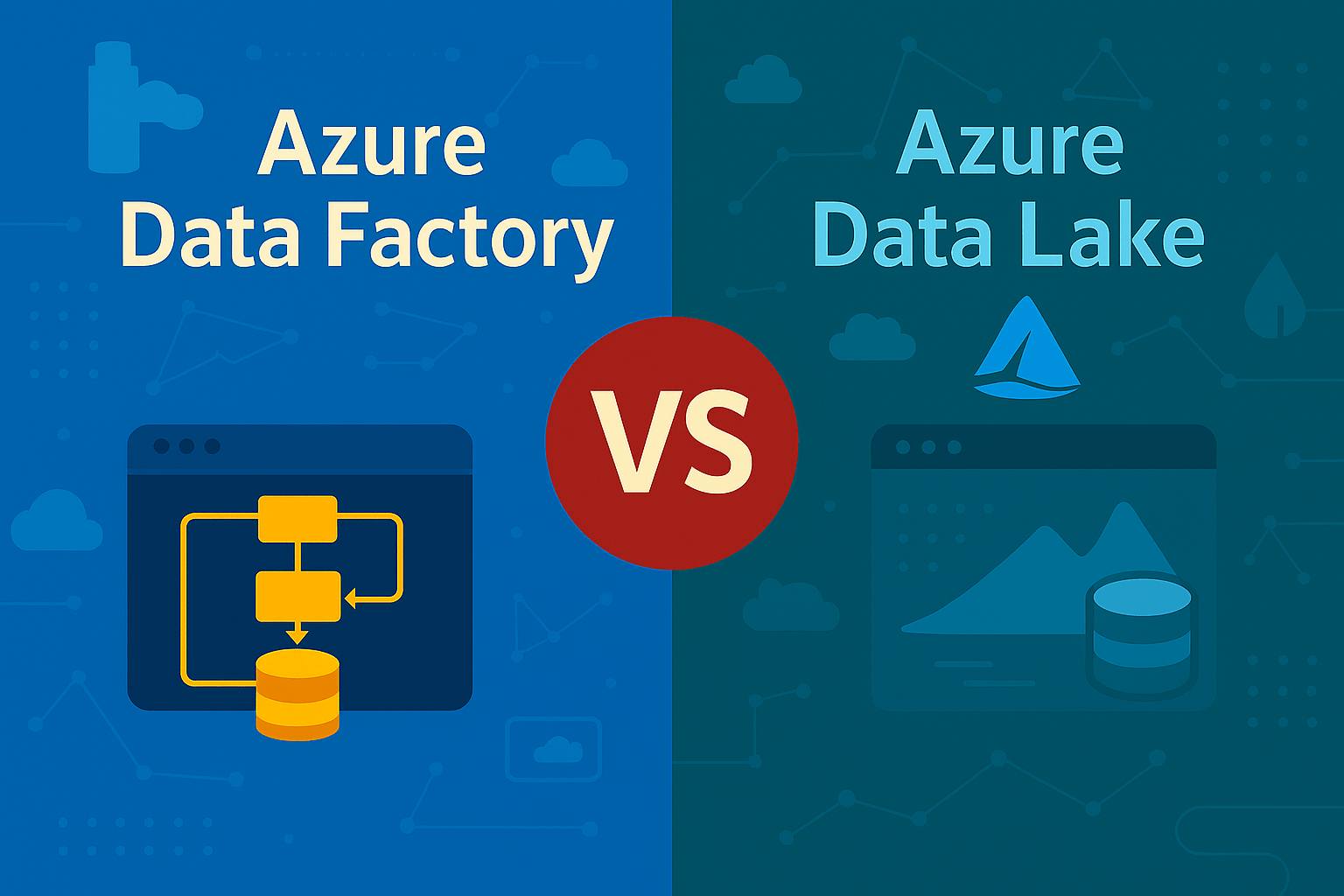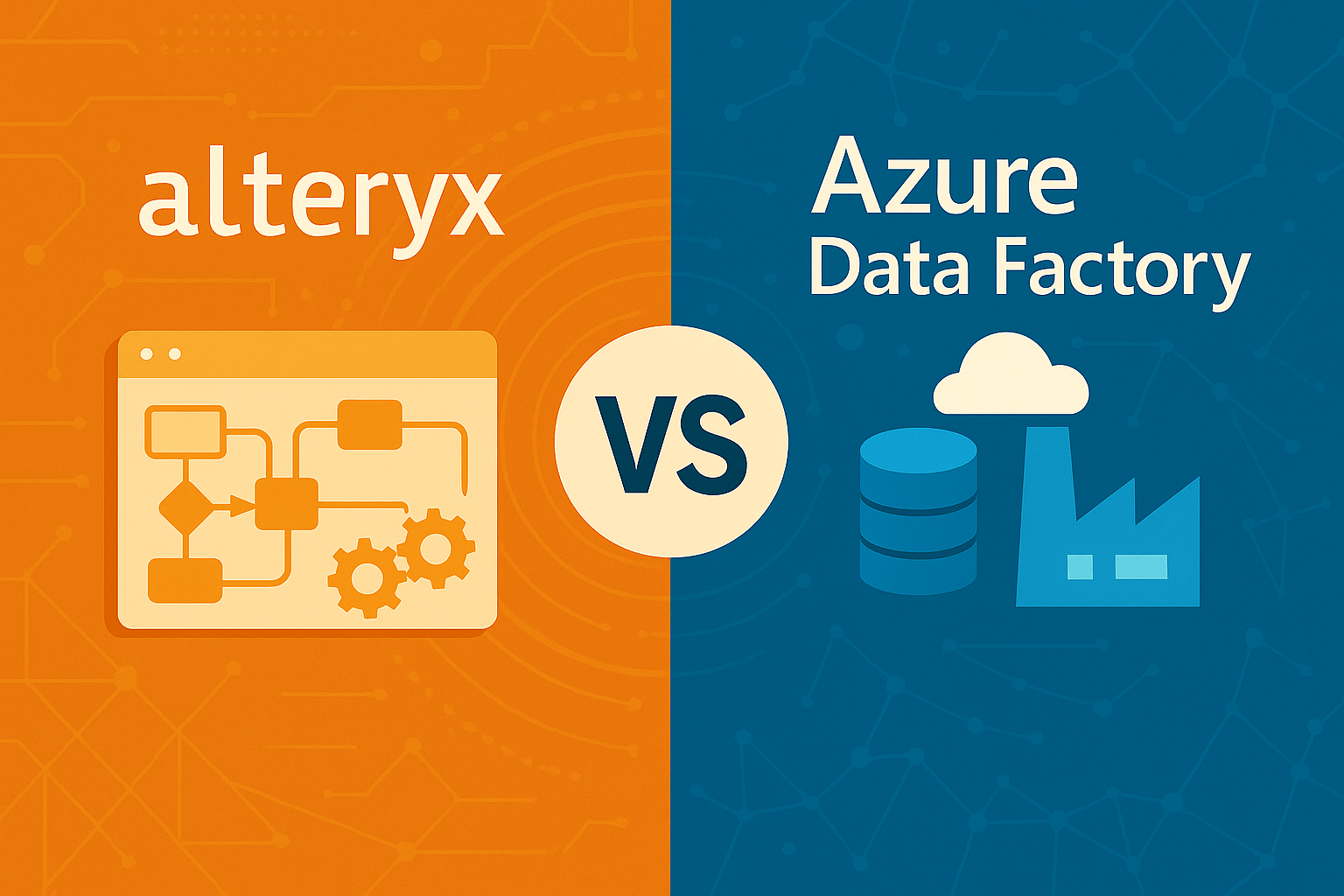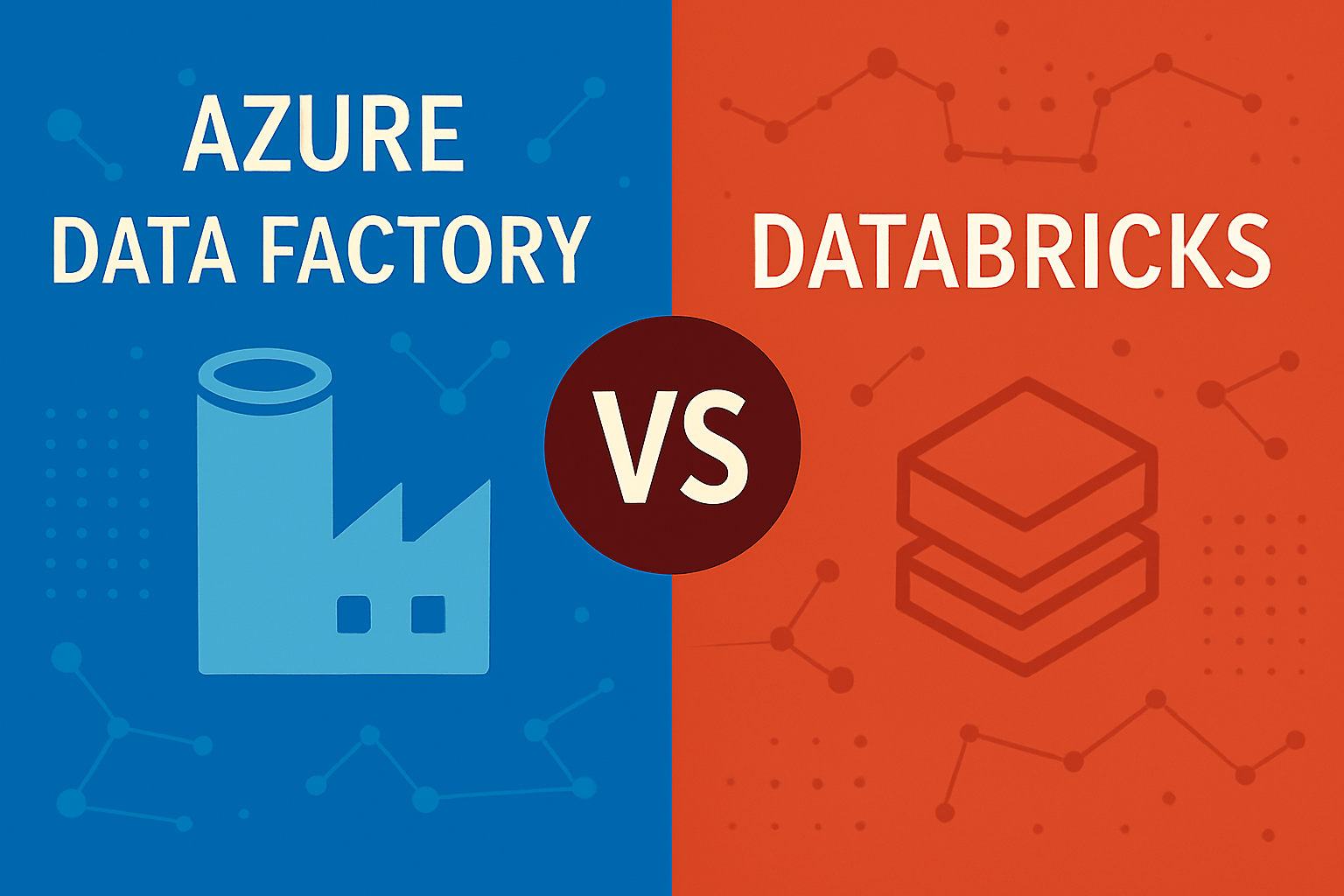Azure Data Factory vs Fivetran: Which Data Integration Platform is Right for You?
Optimize Your Data Integration Success
When organizations struggle with complex data integration processes, the choice between Azure Data Factory and Fivetran often determines the success of their entire data strategy. Both platforms excel at moving and managing data, but they serve fundamentally different organizational needs and technical approaches. Fivetran and Azure Data Factory (ADF) are two popular data integration platforms used for moving and transforming data between various sources and destinations.
Azure Data Factory emerges as the enterprise-grade powerhouse for organizations requiring sophisticated data transformation capabilities and deep Azure ecosystem integration. Meanwhile, Fivetran shines as the automated simplicity champion, delivering plug-and-play data replication with minimal technical overhead.
The key differentiator lies in your organization’s technical expertise, infrastructure complexity, and transformation requirements. Azure Data Factory handles complex data workflows and hybrid environments, while Fivetran automatically extracts data from hundreds of sources with virtually no setup required. ADF is best suited for organizations needing complex, custom workflows within the Azure ecosystem.
This comprehensive comparison will guide you through the essential factors for choosing between these data integration solutions, ensuring your decision aligns with your organization’s data integration needs and long-term growth objectives.

What Makes These Platforms Unique?
Azure Data Factory – Enterprise-Grade Integration Powerhouse
Azure Data Factory (ADF) represents Microsoft’s comprehensive approach to data orchestration and complex data transformations. This data integration solution provides complete control over ETL and ELT processes, supporting everything from simple data movement to sophisticated analytical workflows.
The platform’s strength lies in its extensive customization capabilities and seamless integration with other Azure services. With over 90 native connectors, Azure Data Factory ADF connects to diverse data sources including on premises databases, cloud services, and specialized systems. The visual drag-and-drop interface enables data engineers to create data driven workflows while maintaining the flexibility to implement custom logic through Azure Functions and stored procedures. ADF supports a no-code interface that makes it accessible for non-technical users to design and manage data workflows without writing code.
Azure Data Factory’s mapping data flows feature leverages Apache Spark for large-scale data processing, enabling complex data transformation without extensive coding. This capability proves invaluable for organizations requiring sophisticated data wrangling and transformation logic that goes beyond basic data movement.
The platform’s hybrid architecture supports both cloud and on-premises data integration, making it ideal for enterprises with legacy systems. Integration with Azure Databricks, Azure Synapse Analytics, and Azure SQL Database creates a unified ecosystem for advanced analytics and big data processing. ADF connects natively with other Azure services like Synapse, Databricks, and SQL Database, further enhancing its value for organizations deeply embedded in the Azure ecosystem. Additionally, Azure Data Factory offers integration with third-party services like ApiX-Drive to streamline data workflows.
Fivetran – Automated ELT Simplicity
Fivetran takes a fundamentally different approach to data integration, prioritizing automation and simplicity over customization. With over 700 pre-built connectors, this cloud-native platform excels at automated data integration from SaaS applications, databases, and external services with minimal setup requirements.
The platform’s core philosophy centers on the ELT pattern—extract and load data efficiently, then handle transformations downstream using specialized tools like dbt. This approach eliminates the operational complexity of maintaining custom data pipelines while ensuring up to date data flows consistently to your central data warehouse. Both ADF and Fivetran offer automation capabilities, but they differ in certain critical aspects, especially concerning Change Data Capture (CDC).
Fivetran’s automatic schema change detection represents a significant operational advantage. When source systems modify their data structures, Fivetran adapts automatically, preventing the data pipeline breaks that often plague traditional integration approaches. This capability proves particularly valuable for organizations connecting to frequently-changing SaaS platforms.
The platform’s near real time data replication capabilities, combined with change data capture technology, ensure that your data lakes and data warehouses maintain current information without manual intervention. Monthly active rows pricing provides predictable costs based on actual data volume rather than complex activity-based calculations.

Azure Data Factory vs Fivetran: What’s the Difference?
|
Feature |
Azure Data Factory |
Fivetran |
|---|---|---|
|
Connector Count |
90+ native connectors |
700+ pre-built connectors |
|
Pricing Model |
Pay-per-activity + data movement costs |
Monthly active row count |
|
Transformation Approach |
Built-in mapping data flows |
External tools (dbt integration) |
|
Deployment Options |
Hybrid cloud and on-premises |
Cloud-only architecture |
|
Setup Complexity |
Requires technical expertise |
Minimal setup with user friendly interface |
|
Real-time Capabilities |
Comprehensive streaming support |
CDC-focused replication |
|
Customization Level |
Extensive custom pipeline development |
Limited to connector configuration |
The architectural differences between these platforms reflect their distinct design philosophies. Azure Data Factory emphasizes flexible orchestration capabilities, enabling data engineers to build complex workflows that integrate multiple Azure services and external tools. This approach provides maximum control but requires significant technical expertise to implement effectively.
Fivetran’s automated replication approach prioritizes operational simplicity and reliability. The platform handles the complexity of data capture and loading internally, allowing organizations to focus on analytical work rather than pipeline maintenance. However, this simplicity comes with reduced flexibility for custom transformation logic within the data integration process. Fivetran prides itself on its reliability, providing a 'set it and forget it' experience to users with a 99.9% uptime.
Data Transformation Capabilities
Azure Data Factory provides built-in transformation through mapping data flows, custom activities, and integration with Azure Databricks for sophisticated data processing. Organizations can implement complex business logic, perform advanced data cleansing, and execute multi-step transformation workflows within the platform itself.
Fivetran deliberately limits transformation capabilities within the platform, instead encouraging the use of specialized transformation tools like dbt for downstream processing. While this approach requires additional tools in your data stack, it often results in more maintainable and version-controlled transformation logic.
Monitoring and Observability
Azure Data Factory integrates deeply with Azure Monitor, providing comprehensive logging, alerting, and performance metrics. The platform offers detailed pipeline execution history, data lineage tracking, and integration with role-based access control for enterprise governance requirements. ADF benefits from Azure Monitor and Azure Log Analytics for comprehensive monitoring, logging, and diagnostics for data pipelines. ADF's reliability is backed by its complete management within the Azure ecosystem, featuring robust error detection and status tracking mechanisms.
Fivetran provides streamlined monitoring through its web interface, focusing on connector health, sync status, and data volume metrics. While less comprehensive than Azure’s monitoring ecosystem, Fivetran’s approach reduces operational overhead for organizations prioritizing simplicity over detailed observability.
What Data Engineers Say
Data engineers working with Azure Data Factory consistently highlight its orchestration capabilities and Azure ecosystem synergy. “The ability to integrate seamlessly with Azure Synapse and implement complex data workflows in a single platform saves us significant development time,” reports a senior data engineer at a Fortune 500 financial services company. “When you need to transform data, call Azure Functions, and trigger machine learning pipelines in sequence, ADF’s flexibility becomes invaluable.”
Azure Data Factory enthusiasts particularly appreciate the platform’s support for hybrid environments. “Managing data integration across our on-premises SQL Server instances and cloud storage requires the hybrid integration runtime capabilities that only ADF provides,” explains a data architecture lead at a manufacturing enterprise. “The technical expertise requirement is significant, but the control and flexibility justify the investment.”
Fivetran advocates emphasize the platform’s operational efficiency and rapid deployment capabilities. “We connected 15 different SaaS applications to our Snowflake instance in less than two weeks,” shares a data engineer at a fast-growing e-commerce company. “The automatic schema detection eliminated the pipeline maintenance burden that consumed 40% of our team’s time with previous solutions.”
A leading pharmacy and patient support company leverages Fivetran’s Salesforce connector for handling formula fields dynamically, enabling real-time data access critical to patient care operations. “The automated connector management and seamless integration capabilities allow our analysts to focus on insights rather than data pipeline troubleshooting,” notes their data engineering manager.
Real-World Use Case Scenarios
Azure Data Factory excels in scenarios requiring complex data orchestration and enterprise-scale governance. Global enterprises with legacy systems frequently choose ADF for “lift-and-shift” ETL modernization projects, particularly when deep Azure service integration provides strategic value. Organizations needing to sync data between multiple environments, implement sophisticated business rules, and maintain strict data security controls find ADF’s comprehensive feature set essential.
Fivetran proves ideal for cloud-native organizations prioritizing rapid analytics deployment over complex transformation logic. Companies with distributed SaaS application ecosystems, limited data engineering resources, and predictable data volumes benefit most from Fivetran’s automated approach. The platform particularly suits organizations where data replication reliability matters more than transformation flexibility.

Implementation Requirements Overview
Azure Data Factory Implementation Considerations
Implementing Azure Data Factory requires substantial technical expertise in both Azure services and data engineering principles. Organizations must invest in training data engineers on mapping data flows, integration runtime configuration, and Azure ecosystem architecture. The learning curve proves steeper than alternative solutions, but the investment enables sophisticated data workflows and deep customization capabilities.
Azure Data Factory’s complex pricing model combines activity costs ($0.25 per activity), data integration unit hours for mapping flows, and data transfer charges. While this pay-as-you-go approach can be cost-effective for variable workloads, predicting costs requires careful analysis of your specific data integration patterns and volumes. Azure Data Factory's pricing can be complex and less predictable for teams with fluctuating data volumes. For companies with steady data ingestion needs, Fivetran's pricing can be more attractive than ADF.
Infrastructure requirements include proper Azure subscription setup, networking configuration for hybrid scenarios, and integration with Azure Monitor for operational visibility. Organizations must also establish proper access controls, implement data security protocols, and configure backup and disaster recovery procedures.
Fivetran Implementation Simplicity
Fivetran’s implementation approach prioritizes minimal technical configuration and rapid time-to-value. Most connectors require only authentication credentials and basic configuration, enabling non-technical users to establish data flows within hours rather than weeks.
The platform’s predictable monthly active rows pricing simplifies budget planning, though costs can escalate rapidly for high-volume use cases. Organizations must carefully monitor data growth patterns and connector efficiency to avoid unexpected charges.
Fivetran’s cloud-only architecture eliminates infrastructure management overhead but requires organizations to adopt external transformation tools for complex business logic. Integration with dbt, census, or similar platforms becomes essential for organizations requiring sophisticated data manipulation beyond basic extraction and loading.
Both Platforms Require Strategic Planning
Regardless of platform choice, successful data integration requires proper data warehouse architecture, clear data governance policies, and ongoing monitoring procedures. Organizations must establish data quality standards, implement appropriate security measures, and plan for scalability as data volumes grow.
Integration complexity and time-to-value differ significantly between platforms. Azure Data Factory typically requires 2-6 months for complex implementations, while Fivetran often delivers initial results within 2-4 weeks. However, these timelines depend heavily on organizational requirements, technical expertise, and infrastructure complexity.

Which Platform is Right for You?
Choose Azure Data Factory if you want:
Complex Data Transformations and Workflow Orchestration Select Azure Data Factory when your organization requires sophisticated data transformation logic, multi-step workflows, and integration with analytical systems beyond basic data movement. The platform excels when you need to transform data, trigger external services, and implement complex business rules within your data integration process.
Deep Integration with Microsoft Azure Services Azure Data Factory becomes the logical choice for organizations heavily invested in the Azure ecosystem. Seamless integration with Azure Synapse Analytics, Azure Data Lake Storage, Azure Blob Storage, and other Azure services creates operational efficiencies that justify the platform’s complexity.
Hybrid Cloud and On-Premises Data Source Connectivity Choose ADF when your data architecture includes on premises databases, legacy systems, or complex hybrid cloud requirements. The platform’s integration runtime capabilities enable secure connectivity across diverse environments that cloud-only solutions cannot match.
Custom Pipeline Development and Advanced Analytics Workflows Organizations requiring extensive customization, complex data workflows, and integration with machine learning pipelines benefit from Azure Data Factory’s flexibility. The platform supports custom activities, Azure Functions integration, and sophisticated orchestration capabilities that enable advanced analytical workflows.
Enterprise-Scale Data Processing with Flexible Pricing Select Azure Data Factory for enterprise-scale deployments where activity-based pricing provides cost advantages. Organizations with variable workloads, sophisticated governance requirements, and existing Azure investments often find ADF’s comprehensive feature set justifies the operational complexity.
Choose Fivetran if you want:
Quick Setup with Minimal Technical Configuration Choose Fivetran when rapid deployment and minimal technical overhead take priority over customization capabilities. The platform’s automated approach enables analytics teams to establish data flows quickly without extensive data engineering resources.
Automated Data Replication from SaaS Applications Select Fivetran for organizations with extensive SaaS application ecosystems requiring reliable, automated data integration. The platform’s connector library and automatic schema management eliminate the operational burden of maintaining custom integration code.
Predictable Pricing Based on Data Volume Choose Fivetran when cost predictability and transparent pricing matter more than complex feature sets. The monthly active rows model simplifies budget planning, particularly for organizations with stable data growth patterns.
Focus on Analytics Rather Than Pipeline Management Select Fivetran when your organization prefers to invest technical resources in data analysis and business intelligence rather than data integration maintenance. The platform’s “set it and forget it” approach frees analytical teams to focus on generating insights from transformed data.
Simple ELT Workflows with Downstream Transformations Choose Fivetran for straightforward data replication scenarios where transformation logic can be handled effectively by external tools like dbt. This approach works well for organizations comfortable with modern ELT patterns and cloud-native data stacks.

Final Recommendations
The choice between Azure Data Factory vs Fivetran ultimately depends on your organization’s technical expertise, infrastructure complexity, and transformation requirements. Neither platform represents a universally superior solution—each excels in specific scenarios aligned with different organizational priorities. Fivetran focuses heavily on automated data replication while ADF provides a more comprehensive solution with extensive customization options.
Organizations with significant Azure investments, complex hybrid environments, and sophisticated transformation requirements typically benefit from Azure Data Factory’s comprehensive capabilities. The platform’s learning curve and operational complexity prove worthwhile when customization and deep Azure integration provide strategic advantages.
Conversely, organizations prioritizing rapid deployment, operational simplicity, and extensive SaaS connectivity often find Fivetran’s automated approach more suitable. The platform’s reliability and ease of use enable smaller teams to achieve enterprise-grade data integration without extensive technical expertise.
Consider hybrid approaches for complex organizational requirements. Many enterprises successfully combine both platforms—using Fivetran for automated SaaS data replication while leveraging Azure Data Factory for sophisticated transformation workflows and enterprise system integration.
Before making your final decision, evaluate both platforms through free trials and proof-of-concept implementations using your actual data sources and use cases. This hands-on evaluation reveals operational requirements, performance characteristics, and total cost implications that theoretical comparisons cannot capture.
Remember that successful data integration extends beyond platform selection. Invest in proper data warehouse architecture, establish clear data governance policies, and ensure your team has appropriate technical expertise to maximize your chosen platform’s potential for driving business value through data driven workflows.
Factory Thread – Real-Time Workflow Integration Beyond ELT and Enterprise ETL
Azure Data Factory delivers sophisticated pipeline orchestration for complex hybrid architectures. Fivetran excels in automated SaaS replication with zero-maintenance ELT. Factory Thread introduces a third model—real-time, event-driven process orchestration purpose-built for operational teams.
Factory Thread is not an ETL tool in the traditional sense. It’s a lightweight orchestration engine that connects machines, sensors, and systems in real time—bridging the OT and IT gap without introducing batch-based latency or transformation debt.
Key differentiators:
-
Trigger-first workflows – Initiate actions from machine states, sensor readings, or operator input
-
Streaming data logic at the edge – Deploy flows directly to plant environments without central coordination
-
No-code formula builder – Create business logic, alerts, and decisions using intuitive rules
-
Native system bridging – Connect ERP, MES, SCADA, and IoT platforms without middleware
-
Built for operations, not just analytics – Designed for OT and field teams who need immediate response, not dashboards tomorrow
Factory Thread enables hands-free process automation and instant data-driven decisions, where latency, uptime, and clarity matter most. For teams overwhelmed by the complexity of Azure Data Factory or boxed in by Fivetran’s SaaS replication limits, Factory Thread offers a faster, more tactical path to integration success.
Share this
You May Also Like
These Related Stories

Azure Data Factory vs Azure Data Lake: Which Azure Service is Right for Your Data Strategy?

Alteryx vs Azure Data Factory: Which Data Integration Tool is Right for You?



No Comments Yet
Let us know what you think